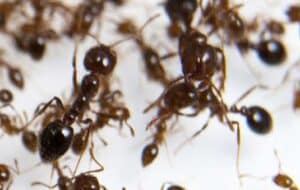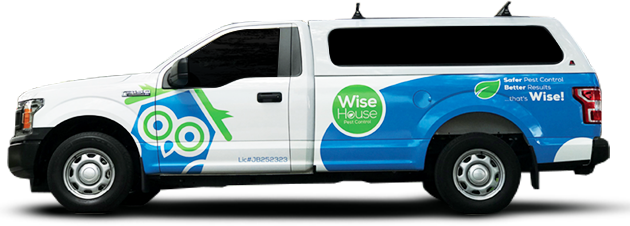South Florida’s lush landscapes and year-round warmth serve as the perfect breeding ground for a variety of species, including the invasive fire ant. Sunny summers and mild winters make for ideal conditions for fire ants to thrive and expand there colonies.
Known for their aggressive behavior and painful stings, fire ants present multiple challenges to the environment and public health. Properly identifying and managing these pests is very important in order to prevent expansion and minimize risks to humans and pets. In this post we explore how to accurately identify these ants and implement effective strategies to control their population.

Fire ants, also known as Solenopsis invicta, originated in South America, flourishing in countries like Brazil, Argentina, Uruguay, and Paraguay. Their aggressive nature and robust adaptability to various climates helped maintain their populations within a competitive ecosystem. However, during the 1930s, these ants were accidentally introduced to the United States through the port of Mobile, Alabama, likely via cargo shipments that included soil or agricultural products, setting the stage for their spread across new areas and territories.
Once in the U.S., the absence of natural predators allowed red imported fire ants to proliferate rapidly, expanding their territory across the southern states and further reaching into parts of California, New Mexico, and Virginia. Human activities, particularly the transportation of soil and plant materials, have significantly increased their spread across new areas. The expansion is not just a national issue, globally, these ants have invaded countries like Australia, China, and the Philippines, posing new challenges to local wildlife and ecosystems.
Environmentally, they disrupt local biodiversity by outcompeting native ant species and other invertebrates. They cause extensive damage to crops, farm equipment, and infrastructure, such as electrical systems, leading to significant financial losses annually. Moreover, their aggressive stings can cause severe allergic reactions in humans and animals, emphasizing the importance of effective pest management and control strategies to curb their growth and mitigate their harmful effects.
Whether you’re a homeowner, a gardener, or simply someone who enjoys the outdoors, knowing how to spot these invasive ants is important for managing their presence effectively. Here is how you can identify South Florida fire ants:
Physical Characteristics:
Fire ants in South Florida, typically identified as red fire ants, exhibit a set of physical characteristics that make them particularly adaptable to their environment:
The behavioral traits of South Florida’s red fire ants are distinct and play a significant role in their survival and impact on the environment. Understanding these behaviors can help in managing their presence and mitigating their effects:
Fire ants are more than just a nuisance. They can cause severe problems, including:
Preventing the spread and establishment of South Florida fire ants requires a multi-faceted approach that combines environmental management with specific ant control strategies. Here are some effective methods to prevent fire ant infestations in your area:
✔ Remove Debris – Fire ants are attracted to areas that provide shelter and food. By keeping your yard free of debris, such as piles of wood, leaves, and clutter, you reduce potential nesting sites.
✔ Mow Regularly – Keeping grass short removes shelter for fire ants and makes it easier to spot and treat mounds early.
✔ Secure Garbage Bins – Ensure that garbage bins have tight-fitting lids to prevent fire ants from accessing food scraps.
✔ Store Food in Sealed Containers – In outdoor or picnic areas, keep food sealed or covered to not attract ants.
✔ Avoid Excessive Mulching – Fire ants are attracted to moist environments, and thick mulch retains moisture. Use thinner layers of mulch or consider alternatives like rubber mulch that does not retain moisture.
✔ Use Ant-Resistant Materials – When building raised beds or borders, consider using materials like treated wood or stone that are less hospitable to fire ants.
✔ Avoid Overwatering: Overwatering your lawn can create ideal conditions for fire ant colonies. Ensure proper drainage and only water as much as necessary to keep plants healthy.
5.Professional Help
Seeking professional help for fire ant control can be highly effective, especially for severe or widespread infestations. Here’s how pest control experts can assist in managing and preventing fire ant problems:
✔ Assessment – Pest management professionals conduct inspections to identify the specific species and assess the scope of the infestation, which is crucial for effective treatment.
✔ Customized Treatment Plans – Based on their assessment, experts develop tailored treatment plans using methods suited to your property’s specific needs.
✔ Advanced Techniques – Professionals have access to targeted control products and techniques that are not typically available to the general public. They apply these treatments in a way that minimizes risk to non-target species and the environment.
✔ Ongoing Monitoring – After the initial treatment, professionals can provide ongoing monitoring and maintenance to prevent reinfestation, ensuring that fire ants are kept at bay over the long term.
✔ Safety and Compliance – Trained professionals handle and apply treatments safely, ensuring compliance with regulatory standards and reducing risk to humans and pets.
Maintain a clean yard, manage waste properly, and adjust landscaping practices to discourage nesting. Regularly inspect your property for new mounds and treat them promptly.
Treat the area with soap and water to prevent infection. Cold compresses can reduce pain and swelling. If the person stung has an allergic reaction, such as swelling or difficulty breathing, seek medical attention immediately.
Fire ants reproduce through mating flights, where fertilized queens establish new colonies. They can spread rapidly due to their ability to adapt to various environments and through human activities like the movement of soil and plants.
Signs include seeing their distinctive mounds, observing fire ants in large numbers, and experiencing their stings. Increased ant activity, especially after rain, is another indicator.
Managing fire ants involves using baits that workers carry back to the colony. Hiring a professional pest control service can help with safely removing fire ants from your property.
While fire ants primarily nest in soil, large infestations can undermine paved areas such as patios and sidewalks. They rarely cause structural damage to buildings but can damage electrical wiring and air conditioning units.
It’s a good idea to inspect your property regularly, especially during warm months when fire ants are most active. After any landscaping or soil disturbance, additional checks are advisable.

Ready to send away pests without harming your pets? Getting started with Wise House Environmental Services is as easy as 1-2-3:
With Wise House Environmental Services, you get more than just effective pest control; you get peace of mind, knowing that your home is without pests and safer for your pets.
Our approach to pest control combines science with safety, offering you the kind of targeted, effective solutions that you won’t find with just any other pest control service. Our services have made a world of difference for homeowners, and we can do the same for you. Your pets will thank you for it!
We serve Port St. Lucie,Lake Worth, Boyton Beach, Palm Beachand the Treasure Coast.


© 2023 All Rights Reserved. | Sitemap